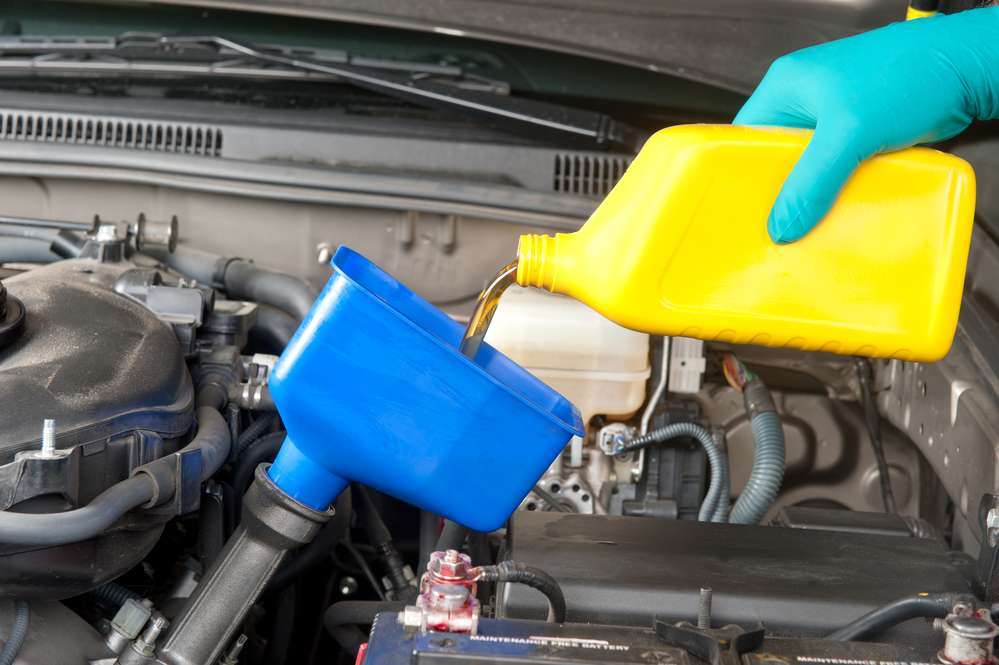Oil is a must for every automotive engine, but not just any oil will do. Modern engines must meet extremely strict industry and automotive regulations in order to ensure long service life. They are developed and constructed to demanding standards. Your new-car warranty could be voided if the proper oil isn’t used and isn’t documented. This blog will tell you when to get an oil change, read on!
Oils that are low viscosity, multi-grade, resource-conserving, and fully synthetic are required for the majority of late-model cars in order to reduce friction and increase fuel efficiency. But selecting the best oil is not always simple. The right oil for your vehicle’s make and model must meet performance standards defined by the API, ILSAC, and/or ACEA as well as any particular requirements established by the automaker or engine manufacturer. It must also have the right SAE viscosity grade. Your car’s owners manual contains information on these criteria, and your local auto repair shop may provide you with details on the recommended oil parameters for your specific vehicle.
Oil change intervals will vary depending on the age, model, and driving circumstances of the vehicle. While it used to be customary to change the oil every 3,000 miles, modern lubricants now allow for suggested oil change intervals of 5,000 to 7,500 miles in the majority of engines. Additionally, your car’s engine might go up to 15,000 miles between maintenance if it needs complete synthetic motor oil. Follow the factory maintenance schedule for oil changes since you cannot determine the condition of engine oil by looking at its color.
Older Car Oil Change Intervals
Older vehicles generally had two maintenance schedules, one for “regular” operation and another for “hard service,” with oil change intervals based on mileage. The latter group entails driving your car while under one or more of the subsequent circumstances:
- mainly short journeys (5 miles or less)
- conditions that are very dusty, hot, or cold
- driving that is constantly in motion
- lugging around hefty loads or pulling a trailer
Maintain your vehicle utilizing the stricter schedule if its usage falls under the owner’s manual’s definition of severe servicing. However, if you drive your car ordinarily, be cautious about wasting your hard-earned money on maintenance tasks like oil changes that your automobile might not actually require or benefit from.
Newer Car Oil Change Intervals
Oil-life monitoring systems are standard in most contemporary automobiles, and they automatically identify when an oil change is necessary and alert you with a warning on the instrument panel. Early simple systems relied on time and mileage, but modern complex solutions examine the actual driving circumstances of the car to predict when the oil will start to deteriorate. In reality, “severe service” recommendations are often completely removed from owner’s and maintenance manuals for newer vehicles since the oil-life monitoring system automatically reduces the oil change frequency when it senses heavy-duty use.
The oil-life monitoring system should be reset each time you have your car’s oil changed. If you perform your own oil changes, you can reset the system by adhering to the owner’s manual’s recommendations.
On newer engines, when oil changes are less frequent, it’s crucial to check the oil level monthly and fill it off as necessary. While many engines only need a few quarts of oil before they need to be changed, some can use up to a quart every 600 to 700 miles. Your new car warranty will not cover engine wear or damage brought on by low oil levels, so maintaining adequate oil levels can save you money on expensive auto repairs. Notably, even if the maintenance alert has not turned on, most automakers advise getting an oil change every 12 months if you don’t put many miles on your car.
Contact Us Today!
Contact us at A1 Quality Repair today to schedule an oil change and any other services you might need!
